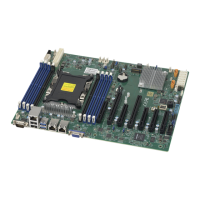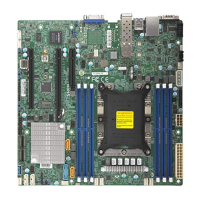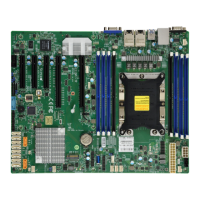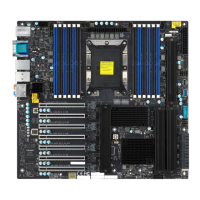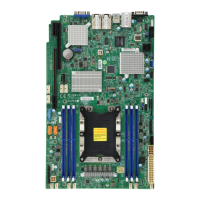15
Chapter 1: Introduction
Note: The table above is continued on the next page.
Motherboard Features
I/O Devices
•
Serial (COM) Port • One (1) front accessible serial port header (COM2)
• SATA 3.0
• Four (4) SATA 3.0 ports with RAID 0, 1, 5, 10 (I-SATA4~7)
• Two (2) S-SATA 3.0 ports with RAID 0, 1, 5, 10 (S-SATA0~1)
• Video (VGA) Port • One (1) VGA connection on the rear I/O panel
Peripheral Devices
•
Two (2) USB 2.0 ports on the rear I/O panel (USB0, USB1)
• Two (2) USB 3.0 ports on the rear I/O panel (USB4/5)
• One (1) front accessible USB 2.0 header with two (2) USB connections (USB2/3)
• One (1) front accessible USB 3.0 header with two (2) USB connections (USB6/7)
• One (1) USB 3.0 Type-A header (USB8)
BIOS
•
256Mb AMI BIOS
®
SPI Flash UEFI BIOS
• ACPI 6.0, Plug and Play (PnP), PCI F/W 3.0, BIOS rescue hot-key, SPI dual/quad speed support, riser Card auto detection
support, SMBIOS 3.0 or later, real time clock (RTC) wakeup
Power Management
•
ACPI power management
• Power button override mechanism
• Wake-on-LAN
• Power-on mode for AC power recovery
• Power supply monitoring
System Health Monitoring
•
Onboard voltage monitoring for +1.8V, +3.3V, +5V, +12V, +3.3V stdby, +5V stdby, VBAT, PCH temperature, system
temperature, and memory temperature
• 5 CPU switch phase voltage regulator
• CPU thermal trip support
• Platform Environment Control Interface (PECI)/TSI
Fan Control
•
Fan status monitoring via IPMI connections
• Three cooling zones
• Multi-fan speed control support through onboard BMC
• Eight (8) 4-pin fan headers
System Management
•
Trusted Platform Module (TPM) support
• SuperDoctor® 5
• Watchdog, Non-maskable Interrupt (NMI), RoHs
• Chassis intrusion header and detection (Note: Please connect a cable from the Chassis Intrusion header at JD1 to the
chassis to receive an alert via IPMI)
• Server Platform Service
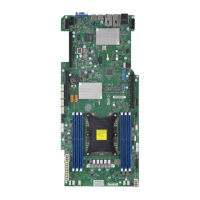
